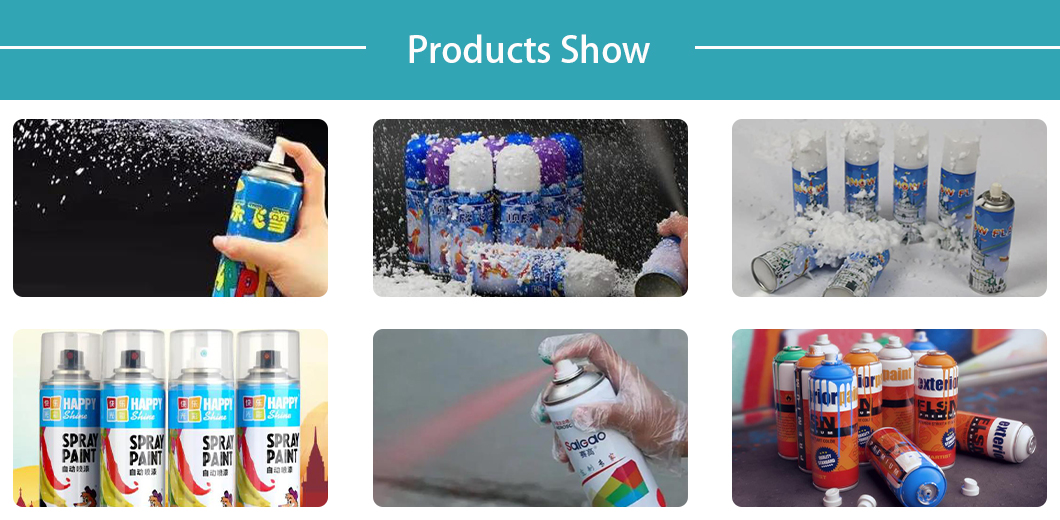2024.6.6 update
Product Advantage:
1. Time-saving: Aerosol filling machines automate the filling process, reducing production time and increasing overall efficiency.
2. Precision: These machines ensure accurate fill levels, preventing underfilling or overfilling of aerosol cans.
3. Versatility: Aerosol filling machines can handle a wide range of product formulations and can sizes, catering to diverse manufacturing needs.
4. Cost-effective: By optimizing material usage and reducing product waste, these machines help manufacturers save on production costs.
5. Consistency: Aerosol filling machines deliver consistent results, ensuring uniform product quality and meeting customer expectations.
Technical Parameters:
Technical Parameter | Description |
Filling capacity (cans/min) | 60-70 |
Liquid filling volume (ml) | 10-1200( can be customized) |
Gas filling volume (ml) | 10-1200( can be customized) |
Filling heads | 4 heads |
Filling accuracy | ≤±1% |
Applicable cans diameter (mm) | 35 - 70( can be customized) |
Applicable cans height (mm) | 80 - 300( can be customized) |
Applicable valve | 1 inch |
Working pressure (Mpa) | 0.6 - 0.8 |
Max gas consumption (m3/min) | 5 |
Power (KW) | 7.5 |
Dimension (LWH) mm | 22000*3500*2000 |
Material | SS304 ( some parts can be SS316) |
Warranty | 1 year |
Key Selling Points | High speed fully automatic high production |
Maintenance Requirements | Recommended maintenance procedures and schedules |
Certifications and Standards | CE&ISO9001 |
Product Uses:
1. Paint spray: Aerosol filling machines are used for filling paint spray.
2. Snow spray: This filling line also could used for snow spray.

Product Operate Guide:
1. Maintenance and Cleaning: Regularly clean and maintain the machine to prevent product contamination and ensure smooth operation.
2. Troubleshooting: Familiarize yourself with common issues that may arise during operation and learn how to troubleshoot them effectively.
3. Safety Precautions: Follow all safety guidelines provided by the manufacturer, including wearing appropriate protective equipment and handling hazardous materials properly.
4. Batch Control: Implement a system for batch control, including proper labeling, tracking, and documentation of each production batch.
5. Efficiency Optimization: Continuously evaluate and optimize the machine's performance to maximize productivity, minimize downtime, and reduce product waste.
FAQ:
1. How long does it take to change over between different products on an aerosol filling machine?
Product changeover times on aerosol filling machines can vary but are typically efficient, ranging from a few minutes to an hour, depending on factors like product viscosity, cleaning requirements, and machine design.
2. Are aerosol filling machines suitable for flammable or volatile products?
Yes, aerosol filling machines can be designed to handle flammable or volatile products, incorporating safety features like explosion-proof construction, vapor recovery systems, and adherence to relevant safety regulations.
3. Can aerosol filling machines be integrated into existing production lines?
Yes, aerosol filling machines can be integrated into existing production lines, allowing seamless integration and coordination with other equipment such as product conveyors, labeling machines, and packaging systems.
4. What kind of training is required to operate an aerosol filling machine?
Operators require training specific to the aerosol filling machine model, covering areas such as machine operation, maintenance, safety protocols, troubleshooting, and quality control, which is typically provided by the manufacturer.
5. Can aerosol filling machines handle products with particulates or suspended solids?
Yes, aerosol filling machines can be equipped with filtration systems or specialized nozzles to handle products with particulates or suspended solids, ensuring reliable and consistent filling without clogging or blockages.

































